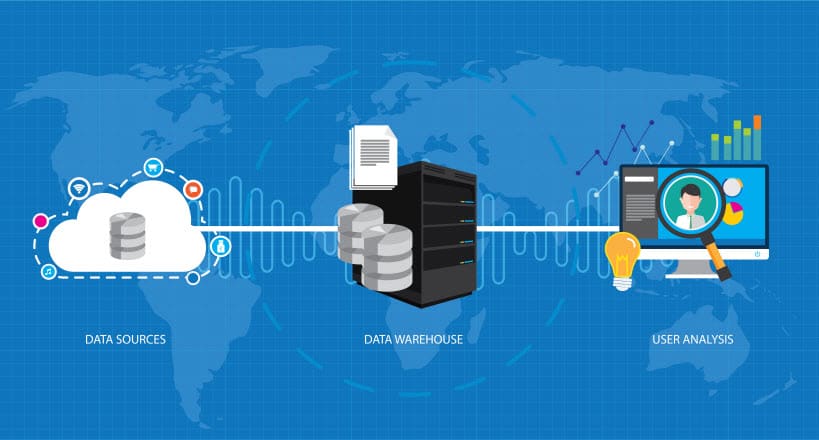What Is A Data Warehouse?
A data warehouse is a central repository of information that allows analytics systems to more easily draw on relevant information. It pulls in data from a variety of sources such as transactional systems and relational databases and usually does this on a regular basis. A data warehouse is an essential part of a Business Intelligence (BI) system, and contrary to common misconceptions, isn’t just another name for a database.
How Does a Data Warehouse Work?
To enable analytics systems to query the data as efficiently as possible, data warehouses organise the data into a schema that describes the layout and type of data. Systems querying the data warehouse can understand exactly how and where the data they need is stored, speeding up and simplifying the whole process.
Data warehouses commonly use Star, Snowflake and Fact Constellation schemas to organise the data, it allows the data to be stored succinctly which reduces redundancy and saves storage space.
Before data can be stored in a data warehouse it will often undergo data transformation to ensure it is in the correct format. This stage of the process becomes more and more important the more sources are connected to the data warehouse. Data from disparate sources cannot easily be interrogated by analytics systems without first being cleaned and transformed.
The Benefits of Using a Data Warehouse
Ultimately, using a data warehouse allows an organisation to make better, more informed decisions as it enables BI systems to run far more efficiently. Given the large data sets that many people rely on to make business-critical decisions and the disparate sources they come from, data warehouses are essential.
Other benefits include:
- Improvements to data quality and consistency
- Creates one version of ‘data truth’
- Provides standardised historical intelligence
Most importantly though, data warehouses provide a layer of separation between analytics and BI platforms and transactional databases. This lightening of the load allows both systems to perform better.
Is a Data Warehouse Just a Database?
Technically, yes, but it’s setup to prioritise the querying of data. A data warehouse differs from a database in that it holds information from many sources in one space, in a standardised way and is specifically designed for data analytics. Databases are for capturing and storing data from a single source.
Other ways you can tell the two apart:
- Databases are optimised for speed and efficiency of updates, data warehouses for reading and querying large data sets.
- Databases typically store their data in normalised structures, which require complex queries. Data warehouses, as we’ve already seen, use schema to make querying easier.
What You Should Do with This Information
Understanding how data warehouses work, and why we use them is all very well, but how should that affect what you’re currently doing? If your organisation or business is using a BI system, then chances are, it should have some form of data warehouse. This may already be in place, but it’s something worth checking.
We come across many BI systems that are really struggling to keep up with the demands placed on them by growing businesses, asking increasingly complex questions from increasingly complex data sets. Because no data warehouse has been set up, this proposition becomes too difficult.
The good news is that data warehouses can be relatively simple to build, depending on the exact environment, of course. If you’d like to talk to one of our experts about building a data warehouse, get in touch today.



